 “The reader is directed to the comprehensive, thorough investigation provided by Sita Ram Goel in his book History of Hindu-Christian Encounters (1996). There, one has examples of modern Hindus who actively refuted the missionaries of the day such as Raja Ram Mohun Roy. In our times Arun Shourie has been the prominent face of anti-missionary activity.” – Dr. Vijaya Rajiva
“The reader is directed to the comprehensive, thorough investigation provided by Sita Ram Goel in his book History of Hindu-Christian Encounters (1996). There, one has examples of modern Hindus who actively refuted the missionaries of the day such as Raja Ram Mohun Roy. In our times Arun Shourie has been the prominent face of anti-missionary activity.” – Dr. Vijaya Rajiva
 Since the publication of the book Breaking India (2011) author and writer Rajiv Malhotra has turned to interfaith dialogue, presaged in his book Being Different (2011) and now in various articles (Huffington Post) and blogs in State of Formation (the latter an outfit designed especially for interfaith dialogue). Breaking India, written with co-author Aravindan Neelakandan, provides an account of the dangers facing India: terrorism, Maoism, Inculturation from the Church etc. This last mentioned aspect is dealt with in some detail, especially in Tamil Nadu since Shri Neelakandan is well-informed in that area. The reader must be reminded that Inculturation is the process by which the Catholic Church has sought since the time of Robert di Nobili in the seventeenth century to the present times with Jesuit scholar Francis Xavier Clooney, as a means to insinuate itself into Hindu culture and eventually convert it. Hindu-Christian Dialogue is the latest avatar of the project of Inculturation.
Since the publication of the book Breaking India (2011) author and writer Rajiv Malhotra has turned to interfaith dialogue, presaged in his book Being Different (2011) and now in various articles (Huffington Post) and blogs in State of Formation (the latter an outfit designed especially for interfaith dialogue). Breaking India, written with co-author Aravindan Neelakandan, provides an account of the dangers facing India: terrorism, Maoism, Inculturation from the Church etc. This last mentioned aspect is dealt with in some detail, especially in Tamil Nadu since Shri Neelakandan is well-informed in that area. The reader must be reminded that Inculturation is the process by which the Catholic Church has sought since the time of Robert di Nobili in the seventeenth century to the present times with Jesuit scholar Francis Xavier Clooney, as a means to insinuate itself into Hindu culture and eventually convert it. Hindu-Christian Dialogue is the latest avatar of the project of Inculturation.
 Since the publication of Breaking India Mr. Malhotra has turned actively to Hindu-Christian Dialogue, in tandem with Fr. Francis Xavier Clooney. The present writer has criticised this move in many articles and the most recent one is on the dialogue/discussion with Clooney held at University of Massachusetts, Dartmouth (“How not to engage in Hindu Christian Dialogue”). Other discerning voices are also beginning to criticise the author’s venture into this arena. Since the time of Sita Ram Goel there has been a strong and trenchant critique of Hindu-Christian Dialogue (see his book History of Hindu-Christian Encounters: A.D. 304 to 1996 ).
Since the publication of Breaking India Mr. Malhotra has turned actively to Hindu-Christian Dialogue, in tandem with Fr. Francis Xavier Clooney. The present writer has criticised this move in many articles and the most recent one is on the dialogue/discussion with Clooney held at University of Massachusetts, Dartmouth (“How not to engage in Hindu Christian Dialogue”). Other discerning voices are also beginning to criticise the author’s venture into this arena. Since the time of Sita Ram Goel there has been a strong and trenchant critique of Hindu-Christian Dialogue (see his book History of Hindu-Christian Encounters: A.D. 304 to 1996 ).
Neverthless Mr. Malhotra has not heeded these voices and proceeds to engage in that dubious enterprise called Hindu-Christian Dialogue.
Malhotra’s book Being Different is the work of an autodidact and as is usual in such situations the author tends to believe that his own work is a world shaking event. The autodidact begins to entertain an exaggerated notion of his importance in the scheme of things. Much of the content of the book which purports to explain the differences of Hinduism from other faiths is known not only to traditional acharyas and gurus (of whom Malhotra is openly contemptuous) but even to the average educated Hindu. The aam admi Hindu, ofcourse, practises his “differences” on a daily basis and does not need a book written by a diasporic Hindu to assist him. The present writer has on previous occasions pointed out the crucial faulty methodology of the book (for instance the truncated version of the ancient Hindu method of Purva Paksha). As an account of Malhotra’s own “churnings” the book is obviously important to himself and it can also make a reading as an adventure of ideas. But to take it seriously as an alternative to the millenia old  knowledge and practice of Hindu acharyas, is misleading and does not benefit the Hindu Samaj. To then go further and use its contents as the basis of Mr. Malhotra’s new-found career in Hindu-Christian Dialogue makes the whole project even more dubious. It can also become the beginnings of an attack on the aam admi Hindu and the traditional acharyas, gurus and maths of Hinduism, which plays directly into the hands of the Catholic Church.
knowledge and practice of Hindu acharyas, is misleading and does not benefit the Hindu Samaj. To then go further and use its contents as the basis of Mr. Malhotra’s new-found career in Hindu-Christian Dialogue makes the whole project even more dubious. It can also become the beginnings of an attack on the aam admi Hindu and the traditional acharyas, gurus and maths of Hinduism, which plays directly into the hands of the Catholic Church.
That Mr. Malhotra takes his new career of purveyor of Hindu-Christian Dialogue seriously can be deduced from his four-part blog in the State of Formation website. Of the four parts two of them deal with specifics such as the etymological origin of the word Dharma, from the Sanskrit root dhri (to uphold) and the difference between the eschatological view of history in the monotheistic faiths, as opposed to the timeless view of Hindu Dharma and so on and so forth. All this is known to the average Hindu and are not new insights. It is Blogs 1 and 4 which are directly related to the political aspect of Hindu-Christian Dialogue. The fact that Mr. Malhotra has said that he is not interested in the “political” angle (see his remarks at the Dartmouth video) does not automatically make it “a-political”. He is, objectively speaking, right in the thick of a political enterprise.
 In these two blogs the author tells us that in the age of globalisation and a multipolar world it is important to have interfaith dialogue. He admits that he has been dialoguing with leaders of different faiths (he does not indicate who they are) but makes specific references to the Jesuit scholar and priest Francis Xavier Clooney, professor of Divinity at Harvard University (USA) who read through the manuscript of his book Being Different and offered suggestions.
In these two blogs the author tells us that in the age of globalisation and a multipolar world it is important to have interfaith dialogue. He admits that he has been dialoguing with leaders of different faiths (he does not indicate who they are) but makes specific references to the Jesuit scholar and priest Francis Xavier Clooney, professor of Divinity at Harvard University (USA) who read through the manuscript of his book Being Different and offered suggestions.
Further, that Dr. Clooney has been the important interlocutor in Malhotra’s venture of Hindu-Christian Dialogue. This would explain to the reader why and how Mr. Malhotra consistently speaks about the differences of religions and asks that the differences should be respected. He speaks about Purva Paksha as a “gazing” at the adversary, but omits the process of the REFUTATION of the adversary, which is the purpose of Purva Paksha. Sri Shankara’s Digvijay tour of India refuted and thus defeated the adversaries of Hinduism. Mr. Malhotra, on the other hand, engages and pleads for respect from the Christian West.
It is understandable why Dr. Clooney would endorse that position since he is not looking for refutation or defeat. He is looking for further patronage.  What is surprising is that Malhotra’s has been negligent both on grounds of his technical neglect of the process of Purva Paksha and the “political” implications of his neglect of the same.
What is surprising is that Malhotra’s has been negligent both on grounds of his technical neglect of the process of Purva Paksha and the “political” implications of his neglect of the same.
The reader is directed to the comprehensive, thorough investigation provided by Sita Ram Goel in his book History of Hindu-Christian Encounters (1996). There, one has examples of modern Hindus who actively refuted the missionaries of the day such as Raja Ram Mohun Roy. In our times Arun Shourie has been the prominent face of anti-missionary activity.
Mr. Malhotra may have his own reasons for entering into Hindu-Christian Dialogue, but to present himself as a CHEERLEADER of the same, and that too ostensibly in the name of the Hindu Samaj, is a sign of hubris.
» Dr. Vijaya Rajiva is a Political Philosopher who taught at a Canadian university. Her academic training is in Philosophy, Political Science, Political Economy and History.
Other articles by the same author
- How not to engage in Hindu-Christian dialogue
- If it ain’t broke, don’t fix it!
- Does Rajiv Malhotra need Purva Paksha for Hindu-Christian dialogue?
- Rajiv Malhotra and Hindu-Christian Dialogue
- Francis Xavier Clooney: Building the Trojan Horse
- Purva Paksha and the Siren Song of Hindu-Christian dialogue
- Rajiv Malhotra’s endorsement of Hindu-Christian dialogue
- Inter-faith Dialogue: What’s in it for Hindus? – Sandhya Jain
- Interfaith Dialogue: Western Christian imperialism vs. the Non-Christian world – Sandhya Jain
- Inculturation & Interfaith Dialogue: The futility of it – Thamizhchelvan
- F/X Clooney, SJ: Poisoned wine in a new Tetra Pak – George Augustine
- Fr. Gabriele Amorth on Yoga: A Passport to Hell? – Virendra Parekh
- Hindu activism outside the Sangh – Koenraad Elst
- Interspirituality: Interfaith dialogue or dissembling monologue – Kenneth Rose
- Kanchi Acharya: No more conversions – Indian Express
- Ram Swarup, Hinduism, and Monotheistic Religions – David Frawley
- Hindu View of Christianity and Islam – Ram Swarup
- “Dancing Jesus” in the New Indian Bible – Swami Devananda Saraswati
- Kanchi Acharya confronts Vatican Cardinal at interfaith meeting – Radha Rajan
- Interfaith Dialogue: The Vatican in sheep’s clothing – Radha Rajan
- Inculturation: Fooling the Hindu masses – Nithin Sridhar
- Catholic Ashrams: Sannyasins or Swindlers – Sita Ram Goel
- History of Hindu-Christian Encounters – Sita Ram Goel
- Atma Jyoti Ashram: Sannyasis or Snake Oil Salesmen? – Swami Devananda Saraswati
- The Interview – Swami Devananda & Rajeev Srinivasan
- The Spirit of Satan at work in India – M.K. Gandhi
Filed under: india | Tagged: arun shourie, christianity, christianity in india, conversion, francis xavier, francis xavier clooney, inculturation, interfaith dialogue, politics, proselytize, psychological warfare, raja ram mohun roy, rajiv malhotra, religion, religious politics, roman catholic church, sita ram goel, university of massachusetts, vatican, vedanta, vedas |


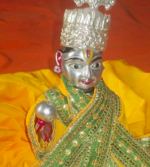





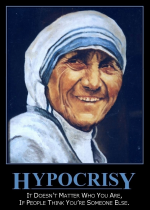
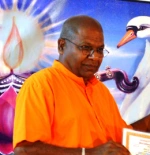

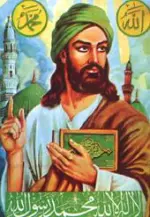
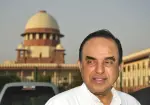


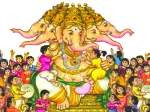

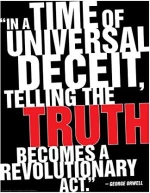

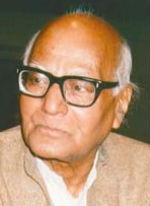

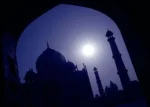




A new word has been coined in the English dictionary
ELSTCELLENCE !!!
http://www.vijayvaani.com/FrmPublicDisplayArticle.aspx?id=2147
The Problem of Christian Missionaries
Koenraad Elst
LikeLike
If Dr Vijaya is still in Canada, she can do this great service of publishing those letters of Patel to Nehru in post independence period which are very vital to our present problems Nehru left us as his beastly legacy. I hope Dr Vijaya will kindly take note of my comments here. God bless
LikeLike
Dr. Vijaya Rajiva doesn’t requires my complicates for her masterpiece work. She is competent enough to know, what she is upto. I fully agree with her her suggestions.
In this article, she compares Raja Ram Mohan Roy with Arun Shourie, which is a little at variance on my knowldge. Raja Ram Mohan Roy was an orientalist in those days of British period who was more used and abused as an orientalist to achieve what the Britishers needed an Indian face. Roy provided them. Arun Shorie is far away from Roy in this respect. There are good records on the net in this respect and I think Dr. Vijaya must be well aware of them being in a Canadian University. British has kept some rare literatures in Canadian libraries regarding Indian British raj history including the letters of Patel to Nehru soon before his death. We cannot access it here.
Anyhow, I would tend to agree with Dr. Vijaya for her master piece work. Keep it up. God bless
LikeLike